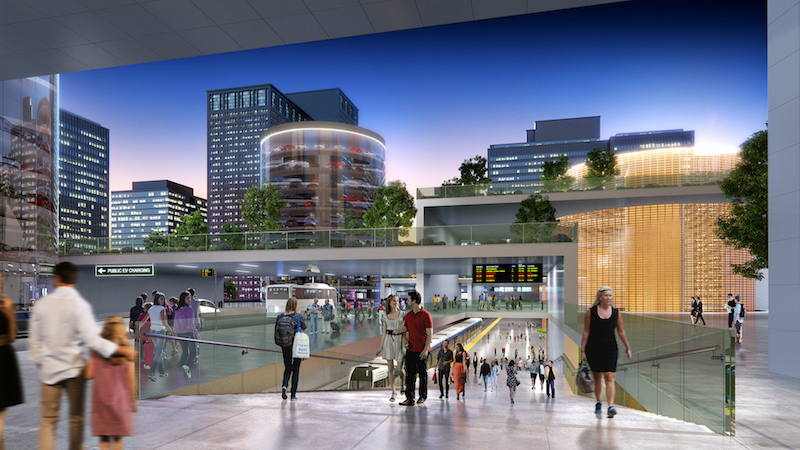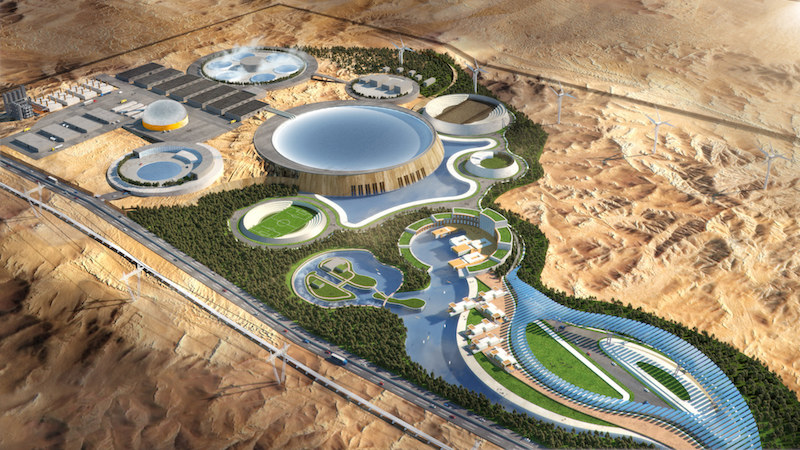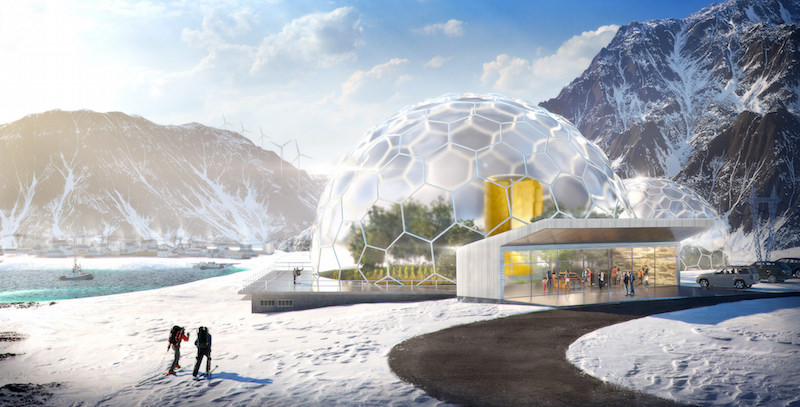More than 11% of the world’s electricity is produced by 447 commercial nuclear power reactors operating in 31 countries. The U.S. alone generates just under one-fifth of its electricity—19.7%—from 99 nuclear reactors operating in 30 states that produce 805.3 billion kilowatt-hours of power. At the end of last year, there were 61 nuclear plants under construction worldwide, the equivalent of 16% of existing capacity, and another 160 that have been firmly planned.
These statistics, from the World Nuclear Association and the Nuclear Energy Institute, would suggest that nuclear power—despite ongoing issues related to safety, security, regulations, and radioactive waste storage—is an ascending alternative to fossil fuels as a source of low-carbon power in a world that is increasing concerned about the impact of climate change.
In an opinion piece that Forbes published in early September, nuclear advocate and scientist James Conca noted that two nuclear power plants near Houston—which provide 2,700 MW of power to two million customers in the area—stayed fully operational during Hurricane Harvey, which caused oil refineries to shut down.
The next generation of nuclear plants will be smaller—the plants under construction range from 70 to 1,750 gross MWs—and resilient. But groups that promote nuclear as an essential ingredient of any cocktail of alternative energy sources “don’t have a large bank of imagery to draw upon” to show the public nuclear’s capabilities, says Suzanne Baker, a spokesperson for Third Way, a neoliberal think tank in Washington D.C.
Earlier this year, Third Way commissioned Gensler to come up with sketches and renderings that can be used to explain the role that advanced reactors could play in a variety of energy systems that enable the world to reach its goals for reducing CO2 emissions. Those renderings were exhibited at D.C.’s Fathom Gallery on Oct. 28. The images can be downloaded from Third Way’s website.

The rendering of a transit hub, where a nuclear reactor provides zero-emissions power for rail and electric vehicles. Image: Third Way
Gensler worked up images for six “scenarios” where nuclear could provide low-carbon power. These include
•A remote arctic community, off the power grid, where electricity is extremely pricey;
•A clean transit hub, where a small reactor powers rail lines, personal electric vehicles, shared autonomous vehicles, and electric buses;
•Growing communities in the developing world where large-scale reactors provide power, and whose excess capacity is used for an onsite desalination plant to provide clean water;
•A high-temperature reactor to power and heat for local industries;
•A Naval base, where advanced reactors generate around the clock electricity and power ships docked at port; and
•Powering data centers, upon which many of life’s daily functions are increasingly dependent.
While much of the growth in nuclear energy technology is occurring overseas, specifically in Russia, China, and the United Arab Emirates, Third Way believes the renderings can help spur innovation in the U.S.—which in recent years has all but ceased building nuclear plants in favor of other forms of alternative energies—“and help American nuclear companies and technologies become more competitive in international energy markets,” says Baker.
She acknowledges that Gensler’s portfolio does not include a broad range of nuclear power plant designs. But, she explains, “We wanted a fresh eye on the topic.” Baker adds that Gensler’s designs typically emphasize sustainability, so the commission “was an alignment of values.”
Earlier this year Baker “cold called” Gensler’s D.C. office about its interest in this project. “Our receptionist went over the public address system and said 'would someone from the Green Team dial zero?,' ” recalls Liz Resenic, LEED AP BD+C, WELL AP, a sustainability specialist at Gensler.
The firm doesn’t have a “green team,” per se; Resenic, on its sustainability team, took the called and spoke with Baker for about 15 minutes about visualization.
At that point, Gensler’s most notable experience in the nuclear power arena was its master planning and urban design for its K.A. CARE project, which stands for the King Abdullah City for Atomic and Renewable Energy in Riyadh, Saudi Arabia.
The firm agreed to accept Third Way’s commission “because we’re interested in being part of this conversation,” says Duncan Lyons, RIBA, LEED AP BD+C, a Senior Associate and Office Building Developers Practice Area Leader, who was the lead designer on this project. (Other Gensler associates who worked on the renderings and sketches include Gregory Plavcan, Matthew Boland, and Katie Costa.)

A desert compound whose advanced nuclear reactor pumps out 1,000-plus MW of capacity that supplies a nearby growing city. Image: Third Way
The project operated under a tight schedule: Visualizing sessions were conducted in August, for which Gensler pulled images from the nuclear industry as well as related examples of energy produced by hydro, solar and wind, says Lyons.
Gensler started producing the renderings and sketches in September, and completed them last month.
Baker says Third Way is targeting three audiences with its renderings: policy makers, the press, and the nuclear sector itself, which could use the illustrations in debates about the efficacy of nuclear power.
Related Stories
| Feb 10, 2011
Zero Energy Buildings: When Do They Pay Off in a Hot and Humid Climate?
There’s lots of talk about zero energy as the next big milestone in green building. Realistically, how close are we to this ambitious goal? At this point, the strategies required to get to zero energy are relatively expensive. Only a few buildings, most of them 6,000 sf or less, mostly located in California and similar moderate climates, have hit the mark. What about larger buildings, commercial buildings, more problematic climates? Given the constraints of current technology and the comfort demands of building users, is zero energy a worthwhile investment for buildings in, for example, a warm, humid climate?
| Feb 9, 2011
Fortune 1000: Despite moral obligation to sustainability, cash is still king
Eighty-eight percent of Fortune 1000 senior executives feel business has a moral responsibility, beyond regulatory requirements, to make their companies more energy efficient, according to a new poll released today by Harris Interactive and commissioned by Schneider Electric. At the same time, the vast majority (61%) of respondents say that potential cost savings are their biggest motivator to save energy at the enterprise-level, outranking environmental concerns (13%) or government regulations (2%).
| Feb 9, 2011
Businesses make bigger, bolder sustainability commitments
In 2010, U.S. corporations continued to enhance their sustainable business efforts by making bigger, bolder, longer-term sustainability commitments. GreenBiz issued its 4th annual State of Green Business report, a free downloadable report that measures the progress of U.S. business and the economy from an environmental perspective, and highlights key trends in corporate culture in regard to the environment.
| Feb 4, 2011
U.S. Green Building Council applauds President Obama’s Green Building Initiative
The U.S. Green Building Council applauded a key element of President Obama’s plan to “win the future” by making America’s commercial buildings more energy- and resource-efficient over the next decade. The President’s plan, entitled Better Buildings Initiative, catalyzes private-sector investment through a series of incentives to upgrade offices, stores, schools and universities, hospitals and other commercial and municipal buildings.
| Feb 4, 2011
President Obama: 20% improvement in energy efficiency will save $40 billion
President Obama’s Better Buildings Initiative, announced February 3, 2011, aims to achieve a 20% improvement in energy efficiency in commercial buildings by 2020, improvements that will save American businesses $40 billion a year.
| Jan 25, 2011
Bloomberg launches NYC Urban Tech Innovation Center
To promote the development and commercialization of green building technologies in New York City, Mayor Michael R. Bloomberg has launched the NYC Urban Technology Innovation Center. This initiative will connect academic institutions conducting underlying research, companies creating the associated products, and building owners who will use those technologies.
| Jan 25, 2011
Chicago invented the skyscraper; can it pioneer sustainable-energy strategies as well?
Chicago’s skyline has always been a source of pride. And while few new buildings are currently going up, building owners have developed a plan to capitalize on the latest advances: Smart-grid technologies that will convert the city’s iconic skyline into what backers call a “virtual green generator” by retrofitting high-rise buildings and the existing electrical grid to a new hyper-connected intelligent-communications backbone.
| Jan 25, 2011
InterContinental Hotels Group gets LEED pre-certification
InterContinental Hotels Group, the world's largest hotel group by number of rooms, announced that its in-house sustainability system Green Engage has been awarded LEED volume pre-certification established from the USGBC and verified by the Green Building Certification Institute. IHG is the first hotel company to receive this award for an existing hotels program.











